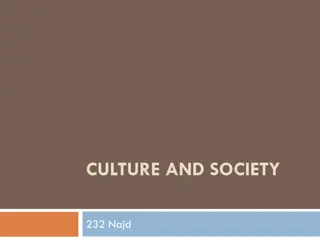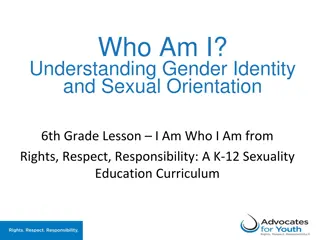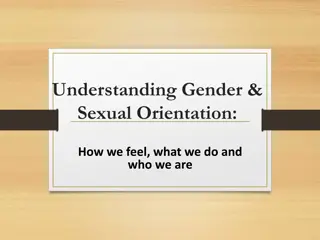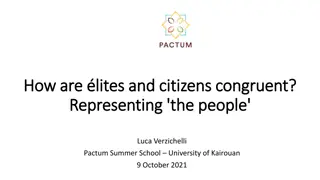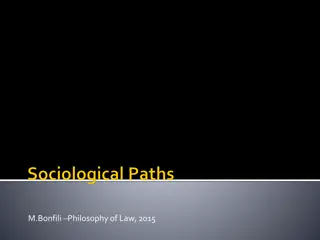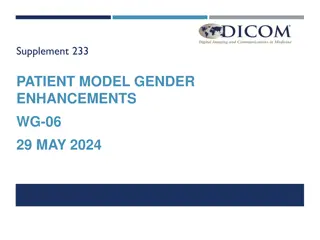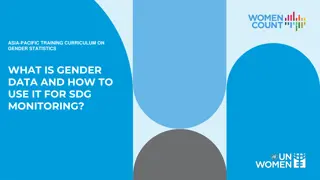Exploring Identity, Gender, and Representation in Modern Culture
Delve into the concepts of identity, group memberships, gender norms, and the influence of advertising on societal perceptions. Uncover the complexities of social constructs, the role of media in shaping gender perceptions, and the debate surrounding gender norms in popular culture. Discover insightful perspectives on individuality, group dynamics, and the evolving landscape of identity expression.
Download Presentation

Please find below an Image/Link to download the presentation.
The content on the website is provided AS IS for your information and personal use only. It may not be sold, licensed, or shared on other websites without obtaining consent from the author. Download presentation by click this link. If you encounter any issues during the download, it is possible that the publisher has removed the file from their server.
E N D
Presentation Transcript
Advertising and Identity Venus Envy and The Eye of the Beholder
Some definitions of Identity The distinguishing character or personality of an individual (merriam-webster online dictionary) In other words, identity is the thing that sets an individual apart and makes it distinguishable from other individuals. However, identity can also be bound up in our membership in a group Social identity is a person s sense of who they are based on their group membership(s) (McLeod).
Group Memberships What are some things that determine groups people can be members of? Gender Religion Race/ethnicity Subculture Profession Can you think of any more? What are some things that people do in order to identify themselves as members of a certain group? What happens when a member of a certain group doesn t act the way a member of that group is supposed to act?
Gender and Identity: Some Basic Assumptions There is a difference between gender and sex. Sex is biological. (It s about parts.) Gender is socially constructed. This means that society has created ideas about what is masculine or what is feminine that have nothing to do with biology. Advertisements and pop culture take part in the construction of gender and use it to sell products. Let s think of some examples.
Whats Wrong with Cinderella? This essay is written by a mother who is consciously trying to avoid having gender norms she sees as harmful forced onto her daughter. Why is this mother, Peggy Orenstein, concerned about her daughter s interest in princesses (and the trend overall)? What reasons does she give for this concern? What is the debate about the princess trend? How does Orenstein place herself in relationship to other voices in the discussion?
Whats Wrong with Cinderella? Notice how Orenstein has a complicated stance here. She concedes that the princess trend might be a sign of progress, She mentions that little girls haven t drunk the Kool-Aid and play basketball in their fancy dresses. She struggles with whether she is sending her daughter a message that being a girl is bad by being anti-princess. Notice that she also interviews several people who are knowledgeable about various areas that relate to her topic and then responds to her sources with her own ideas. What conclusions does Orenstein eventually come to? How does she stake out her stance in this complex debate? Where do you stand?
The Eye of the Beholder p. 187 This essay uses the form of a narrative, or a story, to get its point across. Using narratives in your essays can be an effective way of engaging your audience. Narratives introduce them to the story of one individual is dealing with the issues you are writing about, making the issues more immediate and more human. Why does this author decide that she is ugly ?
Eye of the Beholder Describe the author s transformation at the department store. What is her attitude about the women in the photographs at the beauty counter? About the woman who helps her with her makeover? (These don t stay consistent throughout the essay because the author s attitude changes as the story progresses.) Why do you think that the author makes the choice she does at the end?
Pop Culture and Identity How does this essay comment on the influence of pop culture on identity? Would you say that pop culture has had a positive/constructive influence, or a negative/destructive influence? What do you think this essay is saying about how all of these advertisements have influenced Suh to think of herself as a woman? Is it just the advertisements, or are they working together with other forces in Suh s life?
Effects of Ads on Identity There has been a lot of talk about how ads with unrealistic beauty standards affect women, but not as much has been written about how ads about how to be a man affect men.
Venus Envy p. 168 According to the author, how have men s expectations of themselves in regards to appearance changed recently? Why? Point to places in the article that support your answer. What do you think of this issue? Is this a case of men and women being on a more equal playing field now (because both have to be more concerned about appearance)? Or is this a case of a trend that has historically damaged women also beginning to have negative effects on men?
Connections Between the Essays What connections do you see between Orenstein s concerns in What s Wrong With Cinderella? and the issues raised in the other two essays? Having read about Suh s experiences in Eye of the Beholder, what connections can you make between her day at the beauty counter and what McLaughlin describes in Venus Envy ?





